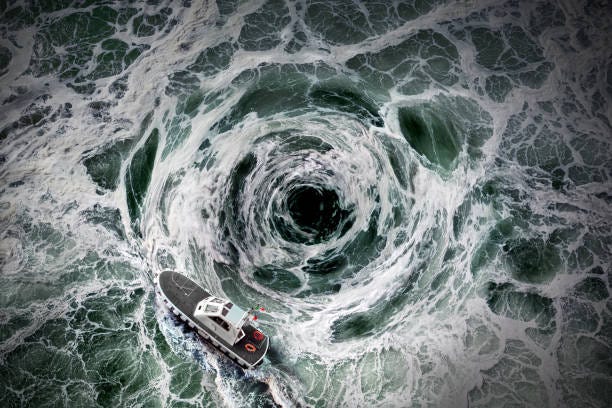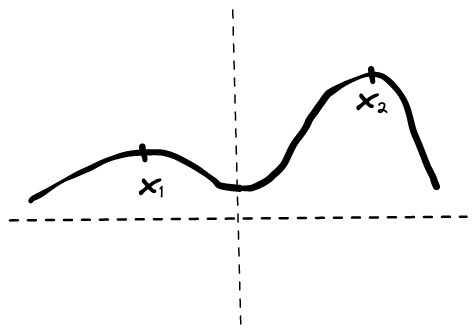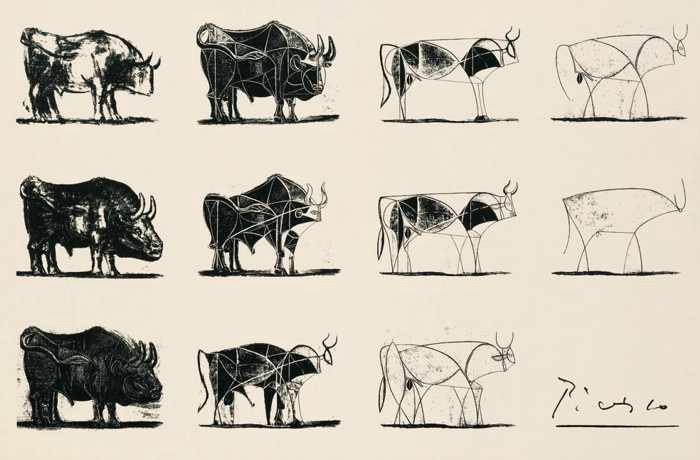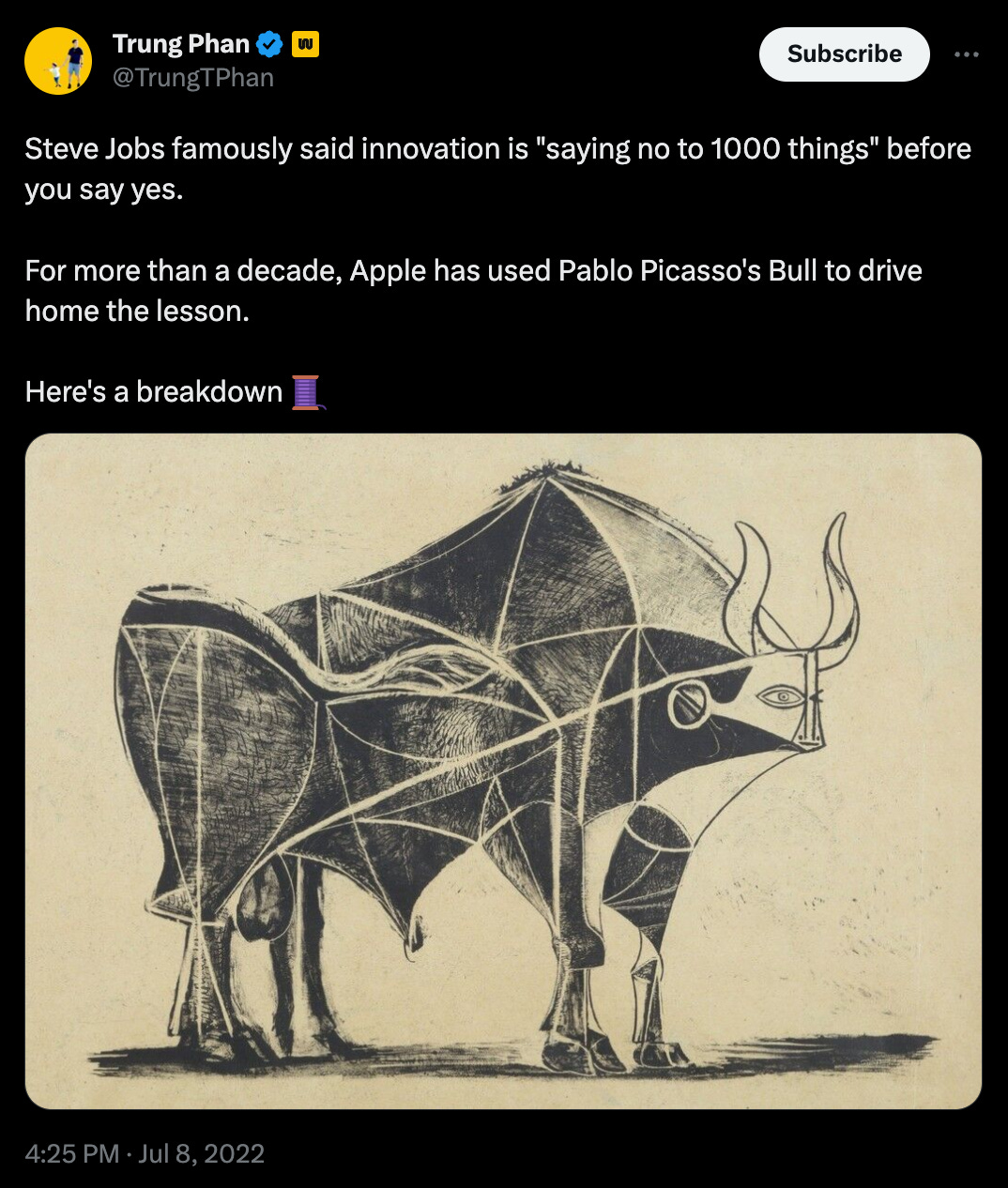About Focus: Into the Maelstrom 🌀
Not only a rabbit hole.
A maelstrom is a powerful, large-scale whirlpool. It can swallow whole ships into it. Its force is comparable to new fields to learn from. It's a supercharged rabbit hole. Alan Poe describes it beautifully in his short story "A Descent Into The Maelstrom":
"I became possessed with the keenest curiosity about the whirl itself. I positively felt a wish to explore its depths, even at the sacrifice I was going to make."
This post will examine the trade-off between getting drawn into a new field and consistent focus.
Before we delve into the heart of the maelstrom, let me give you a glimpse of my own expedition. In 2017, I dabbled in everything from virtual reality to machine learning, data science, and blockchain. It was an intoxicating period of exploration and discovery, of riding the waves of the maelstrom of innovation. But amid this vast ocean, I felt the pull towards one particular current: frontend programming. I have also widened my spectrum for the past year, exploring many exciting fields. Now I’m in the process of focusing again. This time I’m going for Zero Knowledge and Blockchain. This post is a recount of reflections on this type of decision.
In the modern world, we're bombarded with exciting inputs. A clear example is Twitter, which has become a never-ending nerd-sniping battlefield. This is if you follow the right people and don't visit the "For You" tab. The point is it's a trap for curious people. People reinforce these behaviors since curiosity and learning have been celebrated in Western culture. Being a builder with these traits can be complicated. I will expose both paths. Focus and diversification.
Let's consider Daniel Vasallo (@dvassallo). He's a big advocate for what he calls 'small bets.' His strategy? Simple but smart. Instead of pouring energy and resources into a single, unproven idea, he advocates launching many little proofs of concept. The aim? To test whether an idea resonates with the market before diving in headfirst. Look at Pieter Levels (@levelsio), for instance. He's another entrepreneur who has adopted this approach. But what's unique about Levels is his minimalistic execution. He tests these concepts in the simplest ways possible and observes what takes hold.
This sets the path on how to bootstrap a project. It doesn't require a VC-funded startup, but it's still entrepreneurial enough for those with an itch to build and who don't want to work in a corporation.
Explore
But there's a flip side to constant iteration: it can be downright exhausting. The relentless cycle of testing and building, only to test and build again, can push you to your limits. Also, this comes with the risk of needing to stick more. Sometimes dedication is needed to move a project from a local optimum (X1) to a global optimum (X2).
Some common ground is starting research projects. The main focus is to learn. It prizes curiosity and doesn't make us attached to results and expect economic upside. As Linus (@thesephist) defines:
"I think smaller projects that are faster to build are better for research in this space. Building many smaller projects rather than large, ambitious ones has helped me because I avoid getting too attached to one particular idea or product. With smaller-scoped prototypes, I can try many more iterations against the same question or problem… My gut feeling is that three-month "cycles" focused on specific research questions strike an ideal balance. "
Because the map is not the territory, it's better to test in the real world before arriving at (theoretical) solutions.
Consistent Focus
When the research finally reveals an opportunity worth pursuing, that's our cue to zero in and focus. I love the analogy used by Steve Jobs at Apple from Picasso's Bull. Picasso would try to find the "soul of the beast." Distill the essence out of complexity*. This has been Apple's design and strategy, the north star. When Jobs returned to the company, the first actions were leaving few products with transparent markets. Less is more.
Saying no to things you think are great ideas and want to do is the main takeaway from this. To say yes to something, one has to say no many times.
The time spent on other research will help us understand different skills. When you start growing and get the project from zero to one, being able to cover a couple of roles will be essential for the project's success. This is defined as "Collapsing the Talent Stack" by Scott Belsky (@scottbelsky) in his latest post, "Collapsing the Talent Stack, Persona-Led Growth & Designing Organizations for the Future":
"There is a consistent unfair competitive advantage I've witnessed when the talent stack was collapsed - when the lead designer was also the product leader, when the front-end engineer was also a designer, when the designer was also a great copywriter, when the product leader was also the founder/CEO, etc. Tighter conduits for decision making and synthesizing information are an incredible advantage when it comes to crafting products."
To truly understand the core of a concept, we need to stand at the very heart of the chaos. Stay long enough to wait for the waters to calm down and see what the sea beholds. As a good friend says, to fully commit to something, you must: "cross the chasm and burn the bridge." If there's no way to return, one will do everything possible to make that work.
Our journey through the maelstrom teaches us one important lesson: the power of adaptability. As we navigate the sea of ideas, knowing when to explore and focus is essential. But, when you do focus, commit wholeheartedly - cross the chasm, burn the bridge. In this fast-paced world, those who adapt survive and thrive.
Threads
Highly recommend this thread about Picasso’s influence over Steve Jobs and Apple:





